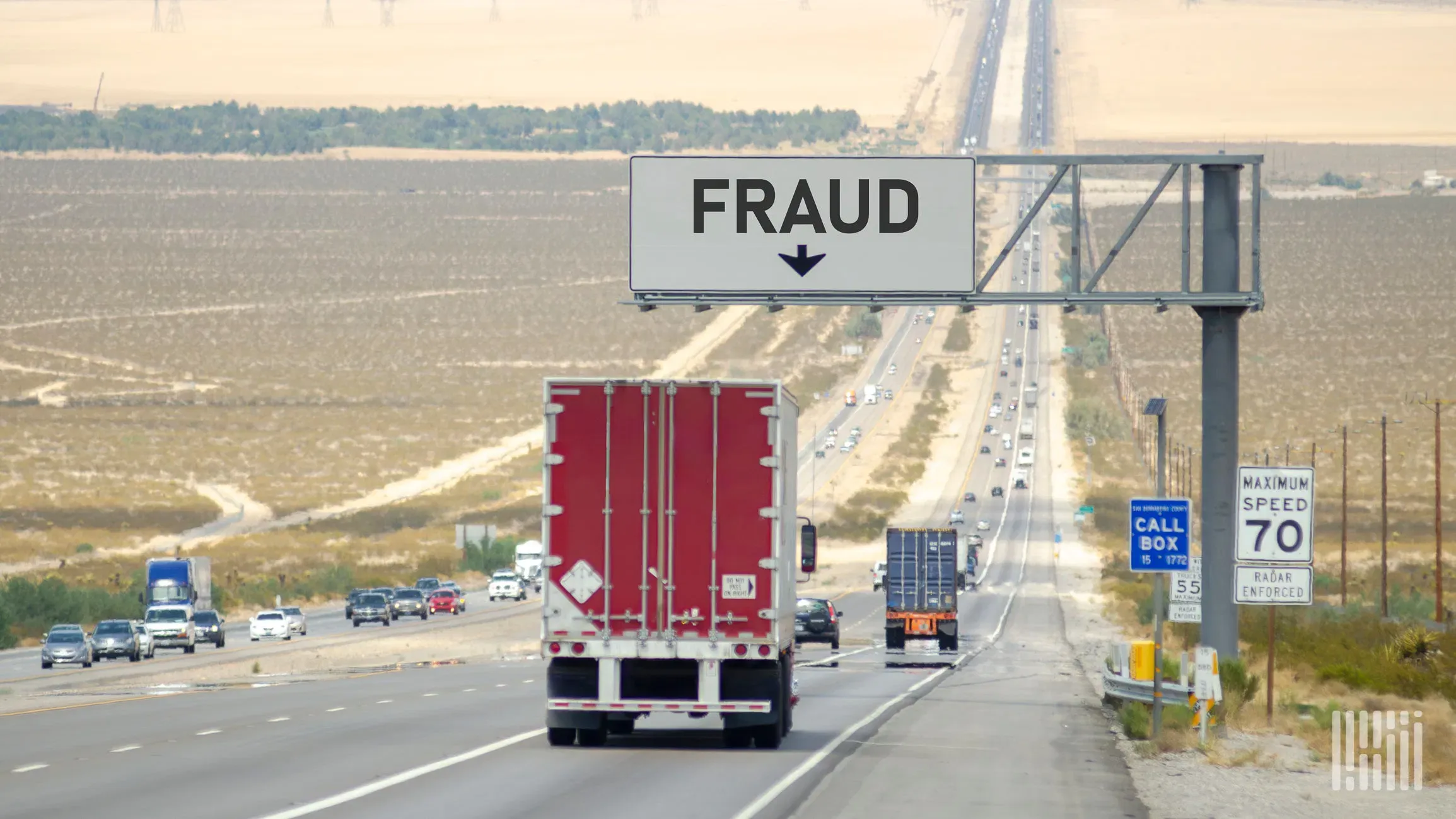The phrase freight fraud is everywhere — in headlines, on LinkedIn posts, in industry chatter. But ask five people what it actually means, and you’ll likely get five different answers, most of them stopping at “stolen freight.” The problem is that the industry has stretched the term so far it no longer points to one clear issue. It’s become a vague catch-all for everything from double-brokering and identity theft to fake pickups, forged insurance certificates, phishing schemes, and doctored paperwork. The result? A real and dangerous problem has been reduced to a marketing buzzword.

The phrase freight fraud is everywhere — in headlines, on LinkedIn posts, in industry chatter. But ask five people what it actually means, and you’ll likely get five different answers, most of them stopping at “stolen freight.”
The problem is that the industry has stretched the term so far it no longer points to one clear issue. It’s become a vague catch-all for everything from double-brokering and identity theft to fake pickups, forged insurance certificates, phishing schemes, and doctored paperwork. The result? A real and dangerous problem has been reduced to a marketing buzzword.
When language gets overused and watered down — a phenomenon linguists call semantic bleaching — it loses its punch. Just like “literally” no longer means “literally,” freight fraud now risks meaning nothing at all. And when everything is labeled as freight fraud, nothing stands out enough to act on.
The Bigger Threat We’re Missing
By lumping all bad behavior under one umbrella, the industry risks missing the real, systemic dangers: repeat-offender carriers who build fraud into their business model. These operators aren’t just one-time thieves; they cut corners, ignore safety rules, hide behind fake identities, and keep restarting under new names.
Many tactics are well-known but still hard to catch:
Buying old USDOT numbers through Facebook or forums to appear more established and bypass vetting filters — a practice that violates FMCSA rules but continues with minimal enforcement.
“Chameleon” carriers who swap USDOT numbers to dodge audits, hide violations, and restart operations under fresh paperwork.
Stolen load board logins that let fraudsters post fake capacity under a legitimate carrier’s identity, often getting loads tendered automatically without human review.
Compromised email accounts used to impersonate real carriers, book freight, and disappear.
Forged documents like PODs or altered shipment details to trigger payments before anyone notices discrepancies.
Double-brokering that hides the true carrier and creates accountability nightmares.
Why Buzzwords Aren’t Enough
Telling shippers and brokers to “vet your carriers” is about as useful as handing out umbrellas in a hurricane. Vetting tools that give carriers a green check mark don’t mean much when fraudsters know how to game the system.
Each type of fraud has different warning signs and different fixes. A forged POD isn’t the same as a phishing attack, and buying a USDOT number online isn’t the same as an owner/operator updating their address. But our industry’s vague language blurs these distinctions and keeps us in a reactive loop.
A Call for Clarity and Enforcement
Real progress starts with naming each tactic, not just shouting “stop freight fraud.” Regulators need to close loopholes in the USDOT registration process, and industry players need to share specifics when they see something suspicious. Only then can technology, enforcement, and education target the root causes rather than just symptoms.
The good news? Conversations at the federal level — including the “Enforcing Commonsense Rules of the Road for America’s Truck Drivers” initiative — suggest the problem is finally getting the attention it deserves. But meaningful change won’t happen if we hide behind buzzwords.
It starts with honest, detailed reporting, peer-to-peer education, and a shared commitment to keep bad actors out of the supply chain. If we focus on the real problems instead of the marketing language around them, we have a shot at turning the tide.